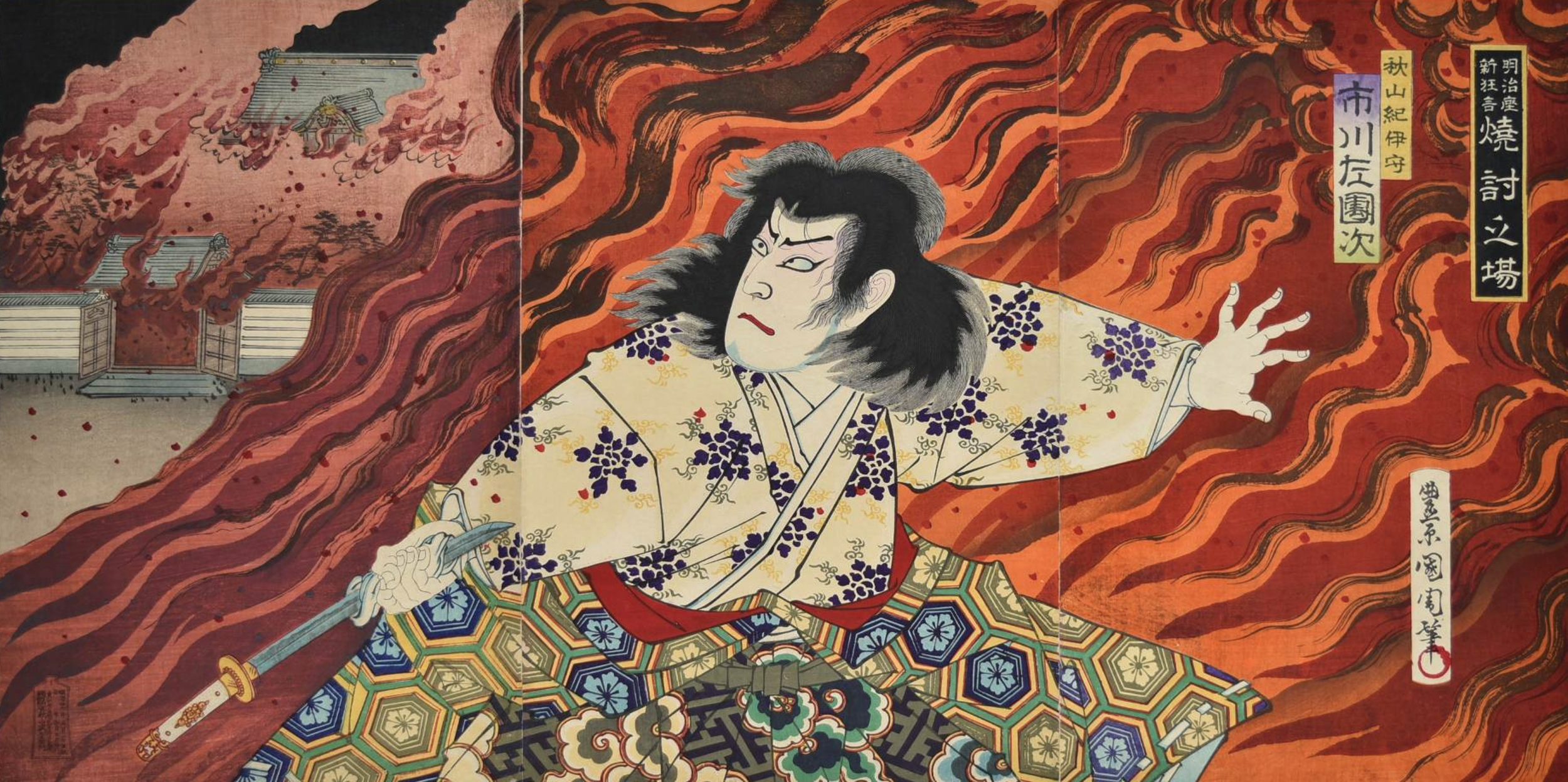KUNICHIKA
COLLECTING JAPANESE PRINTS FEATURED MEIJI ARTISTToyohara Kunichika
1835 - 1900
Profile at a Glance:
Meiji Period woodblock print artist
Designs focused on Kabuki actor portraits and war scenes from military campaigns
Well-known for his large scale designs utilizing two and three sheet compositions
Ōshima Yasohachi, otherwise known as Toyohara Kunichika, was a woodblock print artist born on June 30, 1835, in the Kyobashi district of Edo. From the age of eleven, Kunichika studied under artist Toyohara Chikanobu before becoming an apprentice to ukiyo-e master Utagawa Kunisada I (Toyokuni III) in 1848.
An ardent fan of Kabuki theatre, Kunichika went on to publish a series of yakusha-e, or actor prints in the following decades. He would often produce sketches before and during performances and at backstage rehearsals. Among the different styles of formatting are diptychs, triptychs, half-body portraits, and ogao-e, or "large face pictures." What sets Kunichika apart from the myriad of yakusha-e artists, however, is his innate ability to translate emotional depth; indeed, his work may be some of the most dramatic ever produced.
Alongside his contemporaries Yoshitoshi Tsukioka and Kiyochika Kobayashi, Kunichika is widely regarded as one of the three great ukiyo-e masters of the Meiji era. His unrelenting dedication to traditional means of production and style, as well as his masterful use of color, make Kunichika a rarity among artists of this genre.



